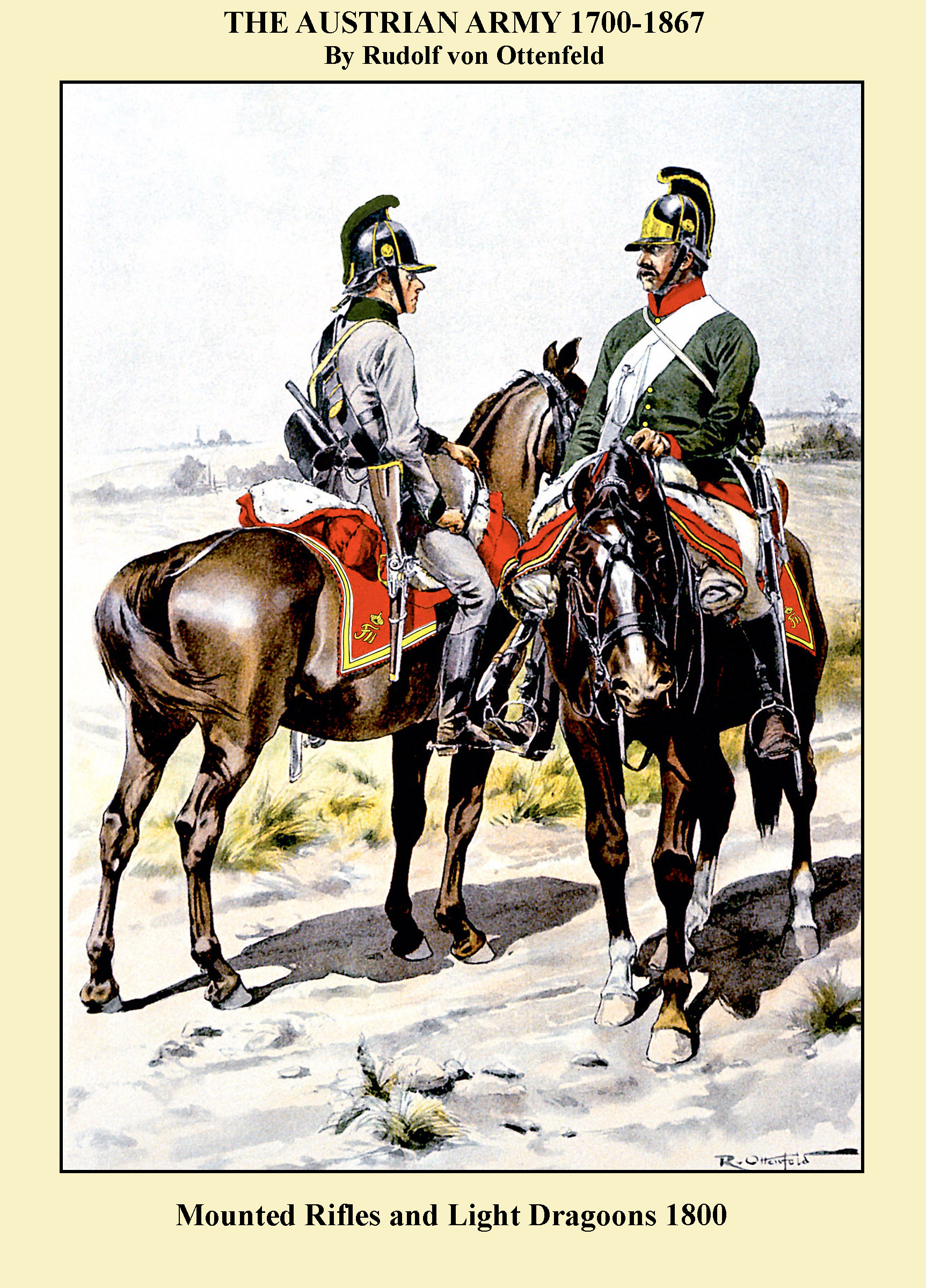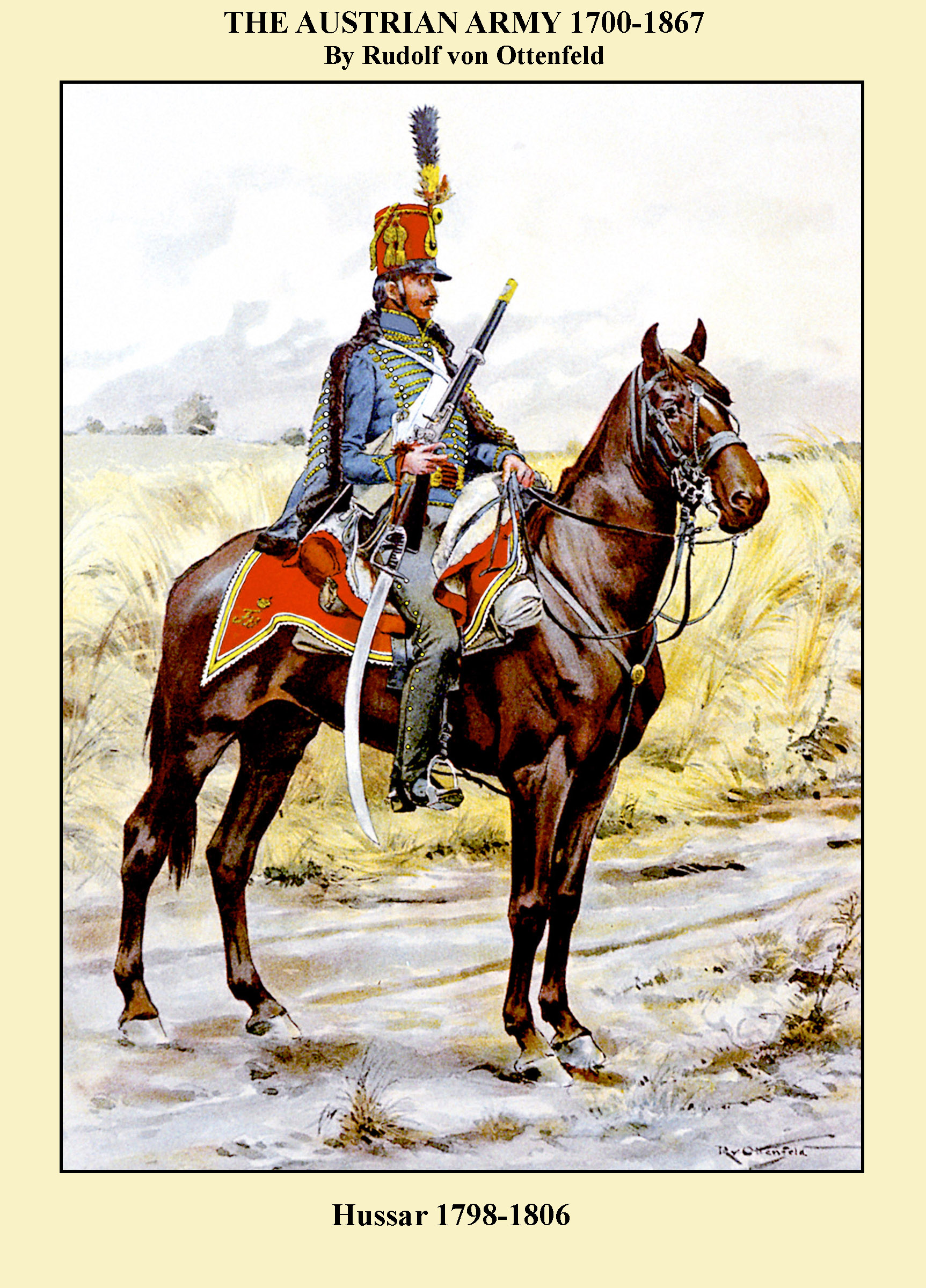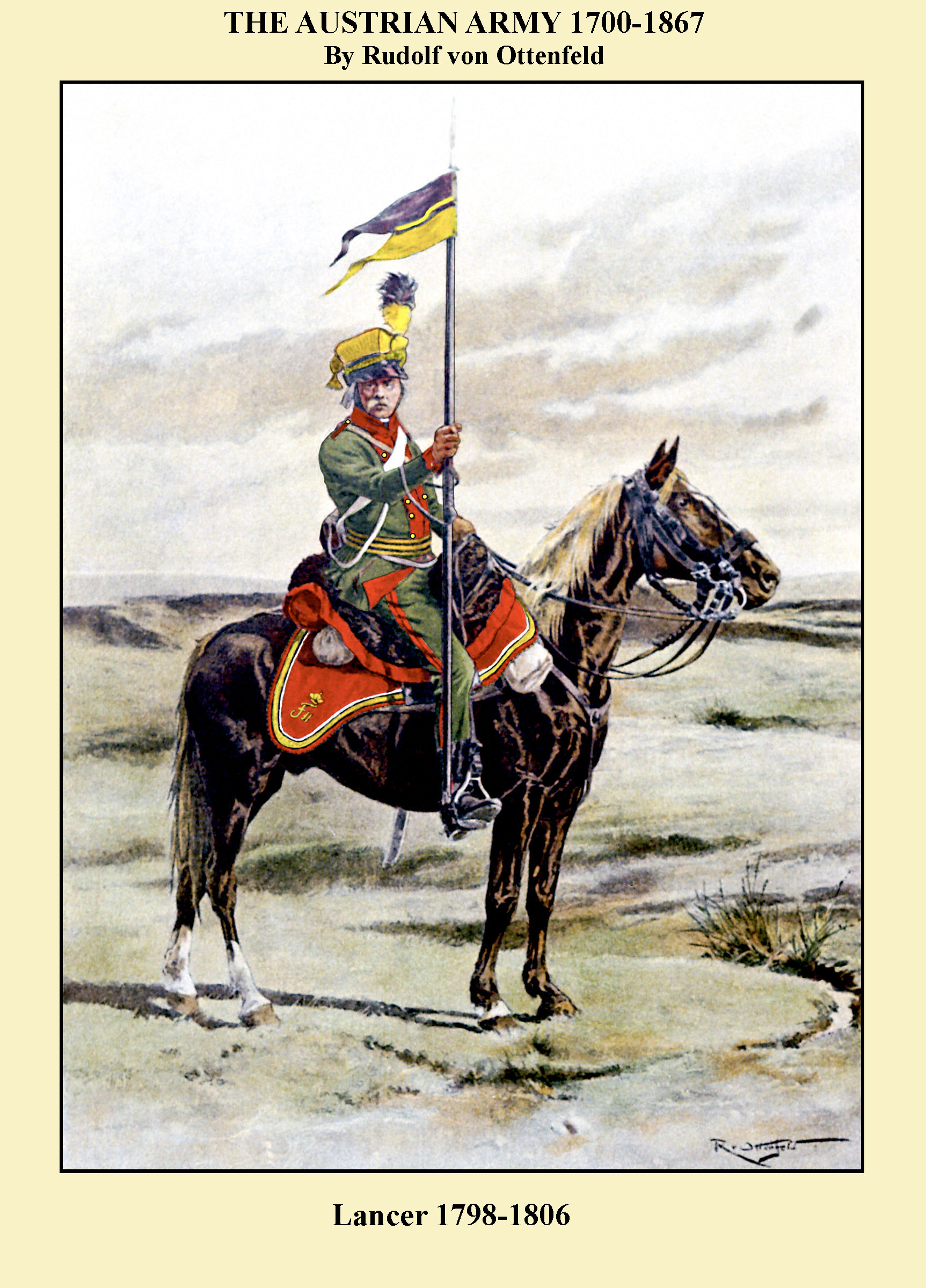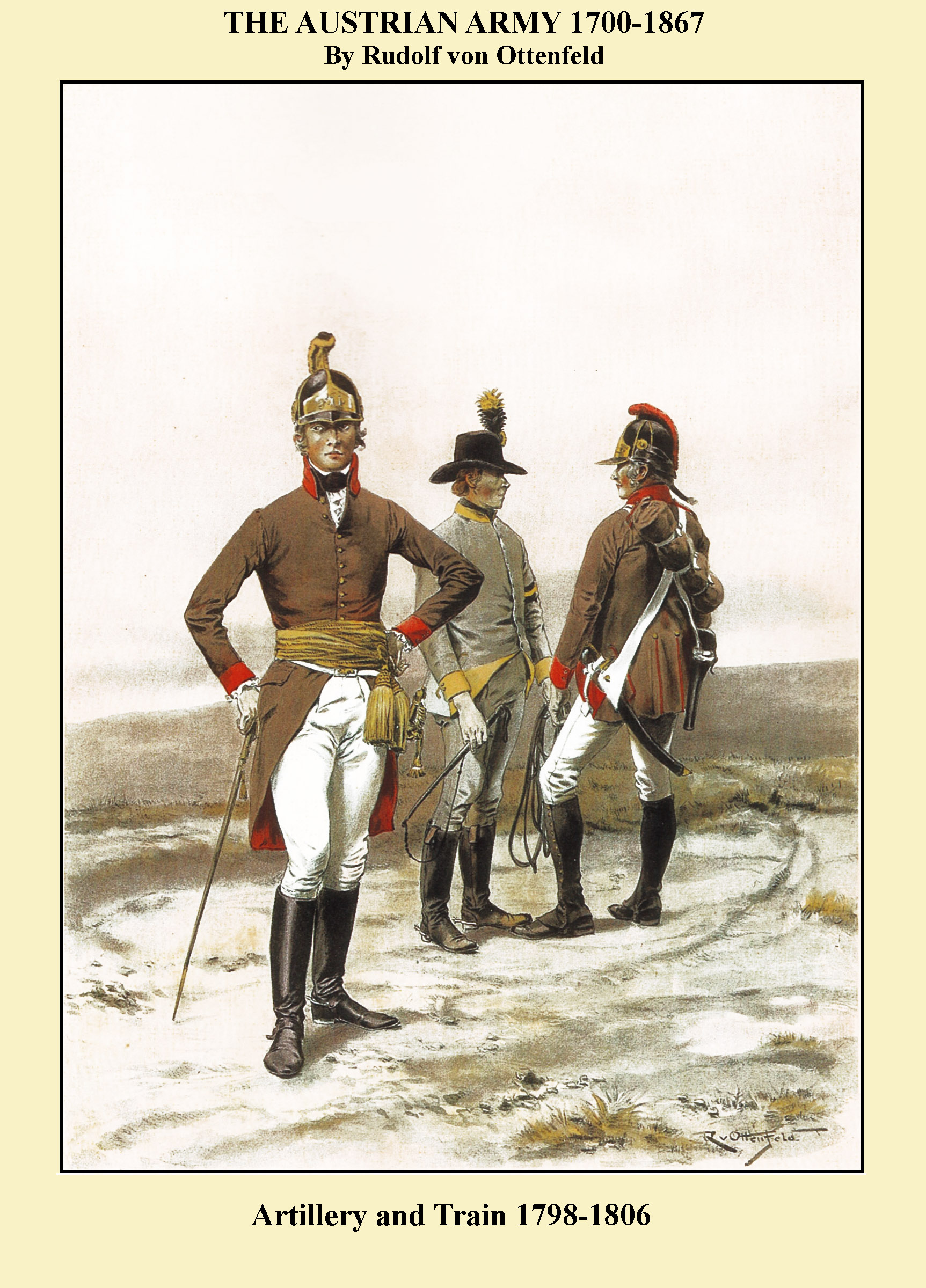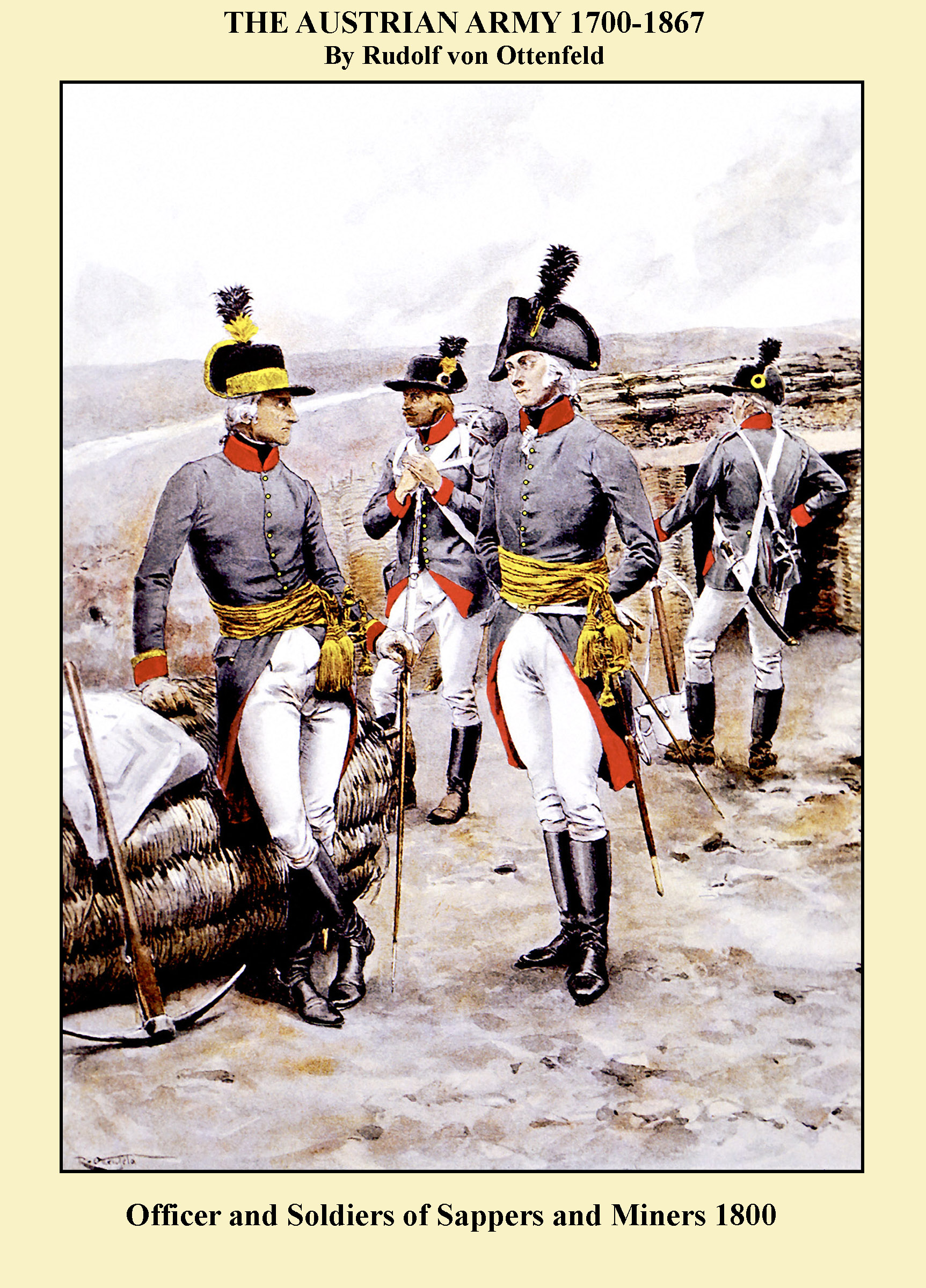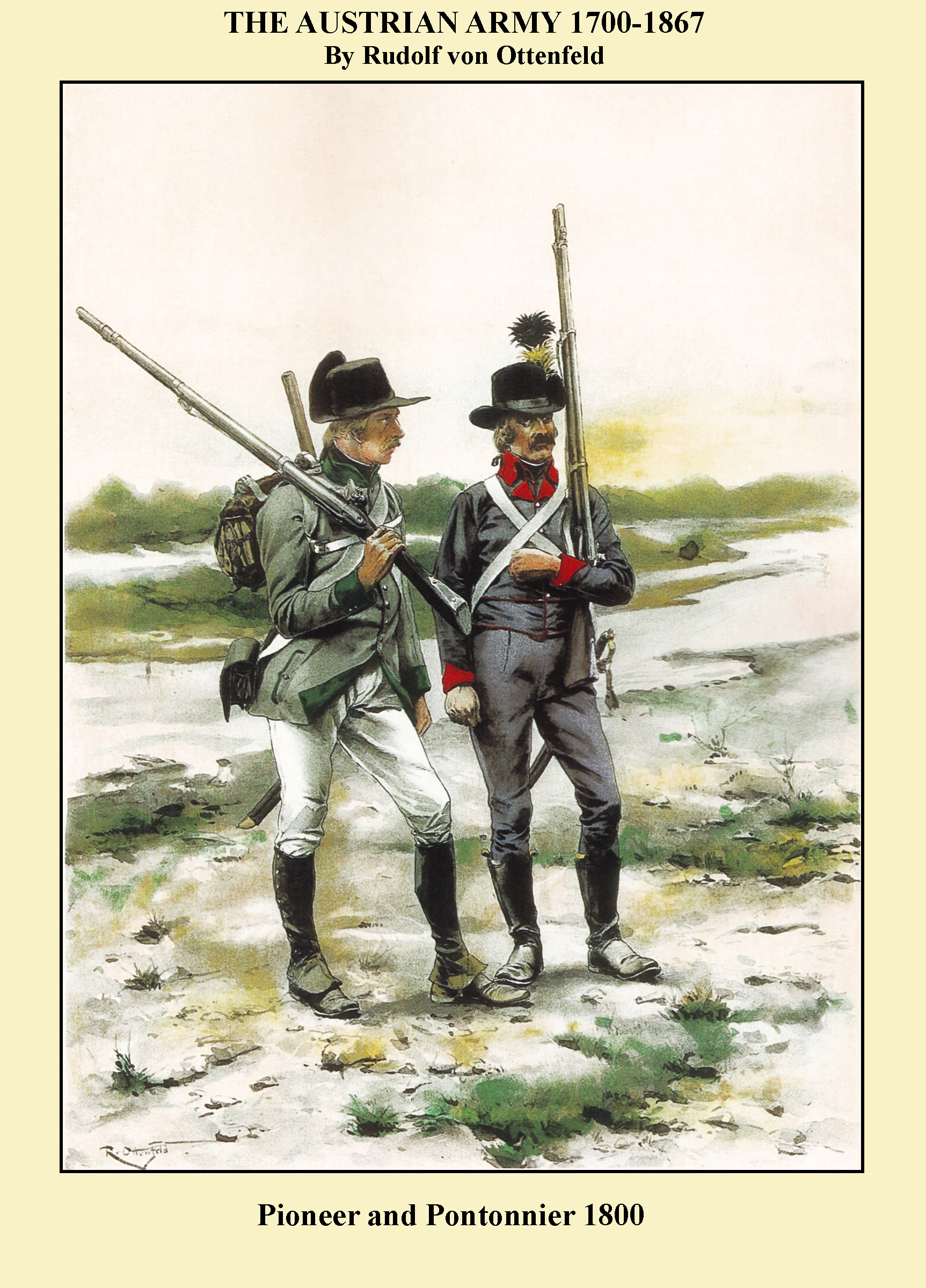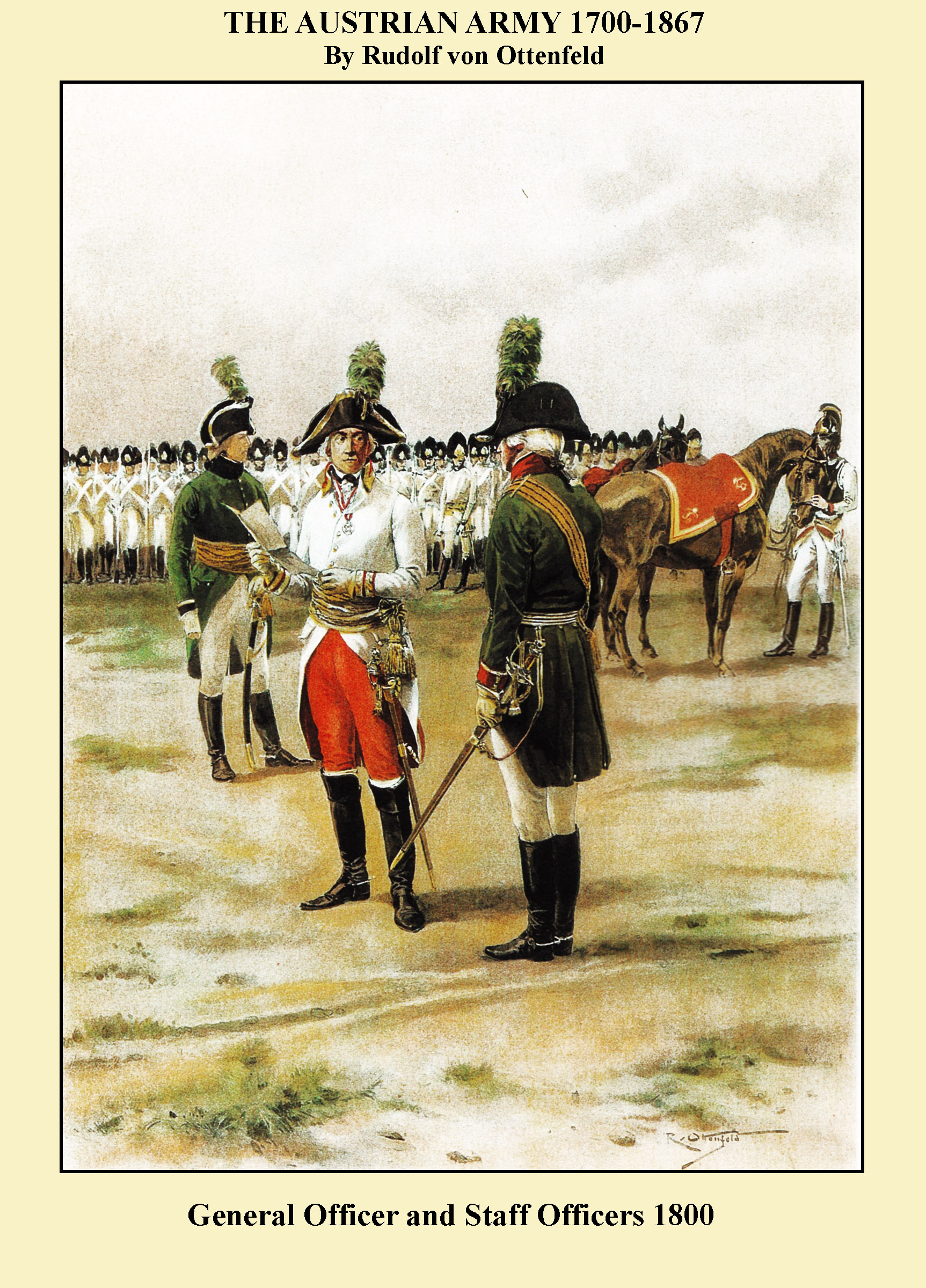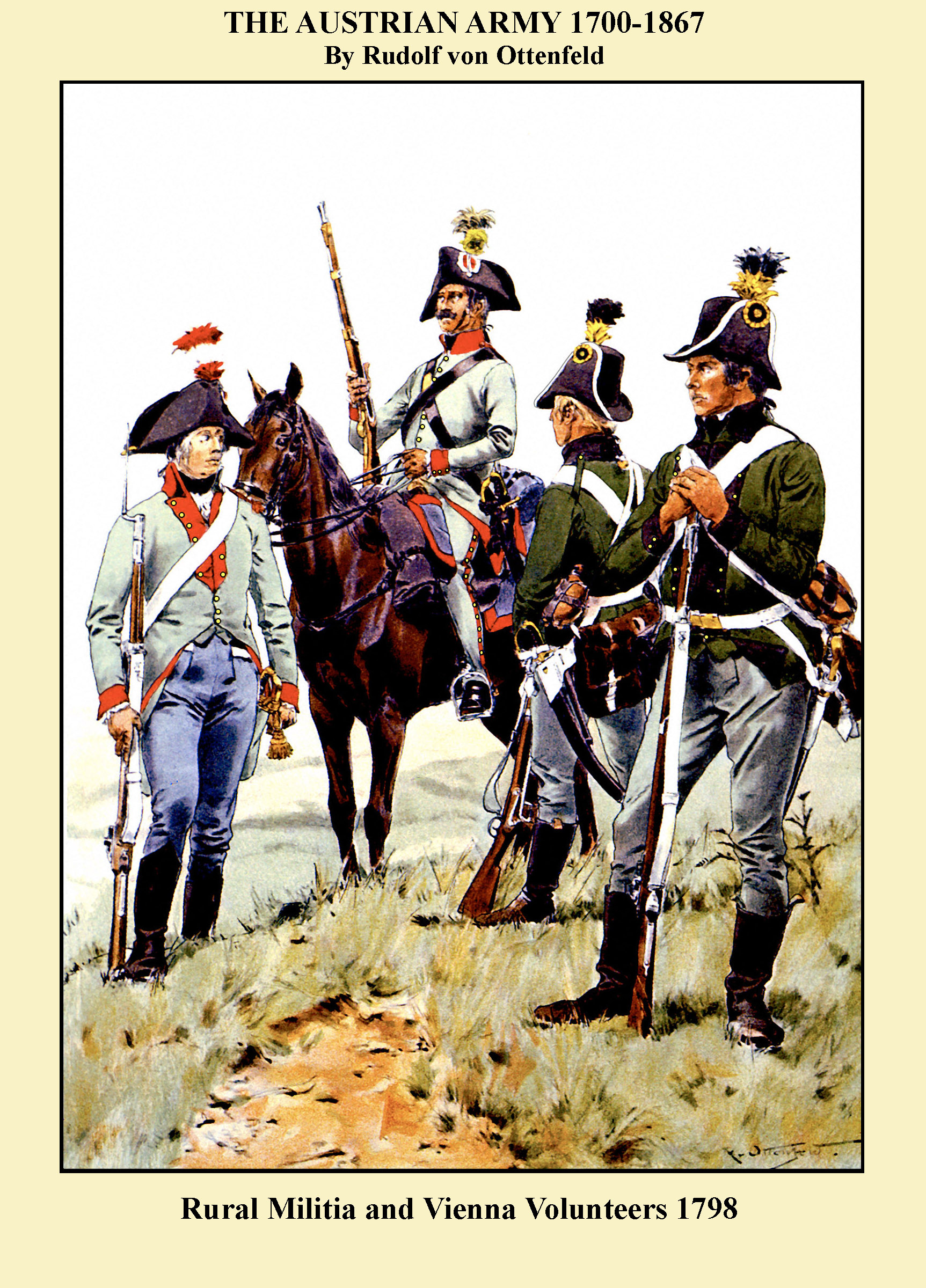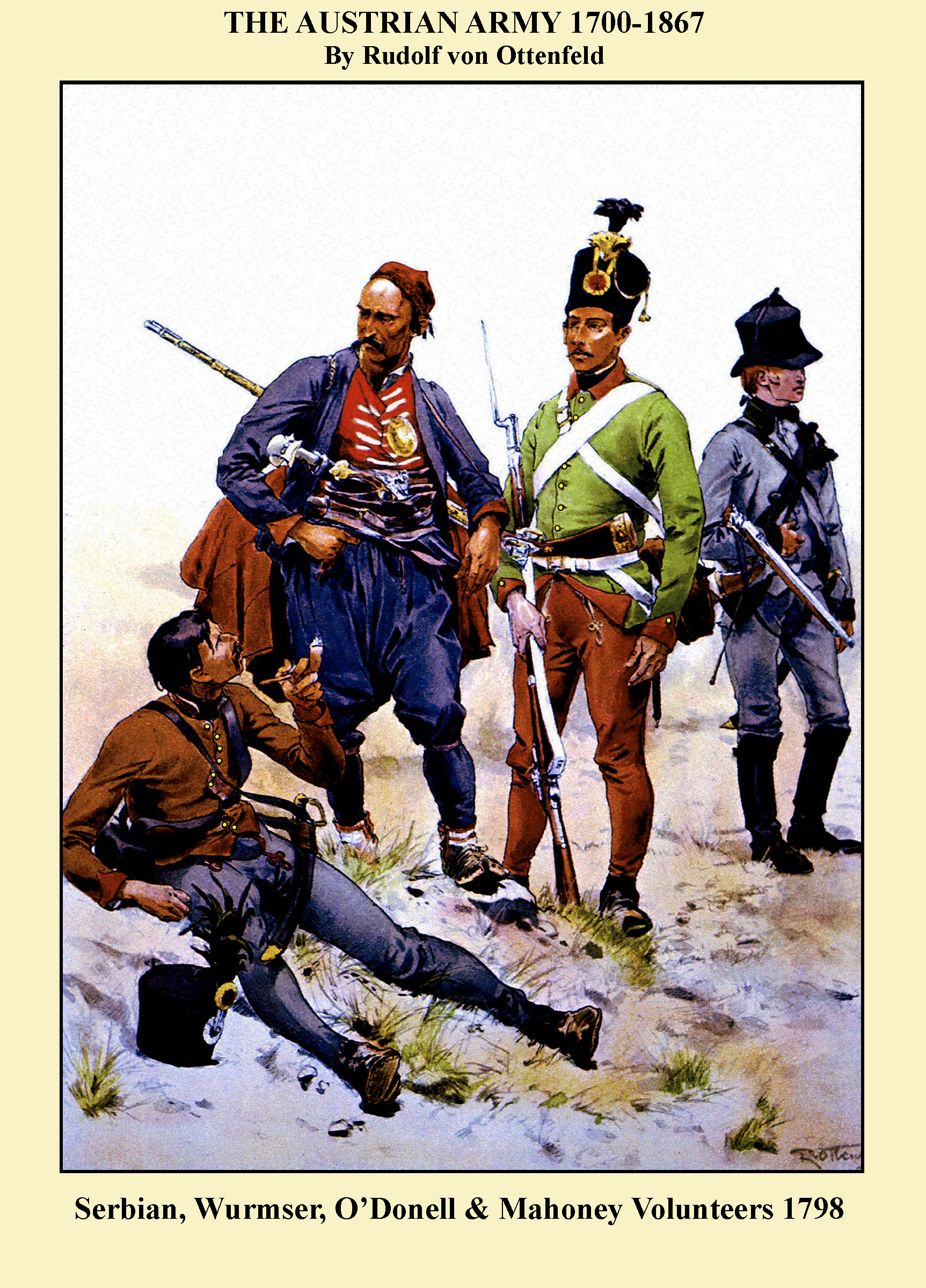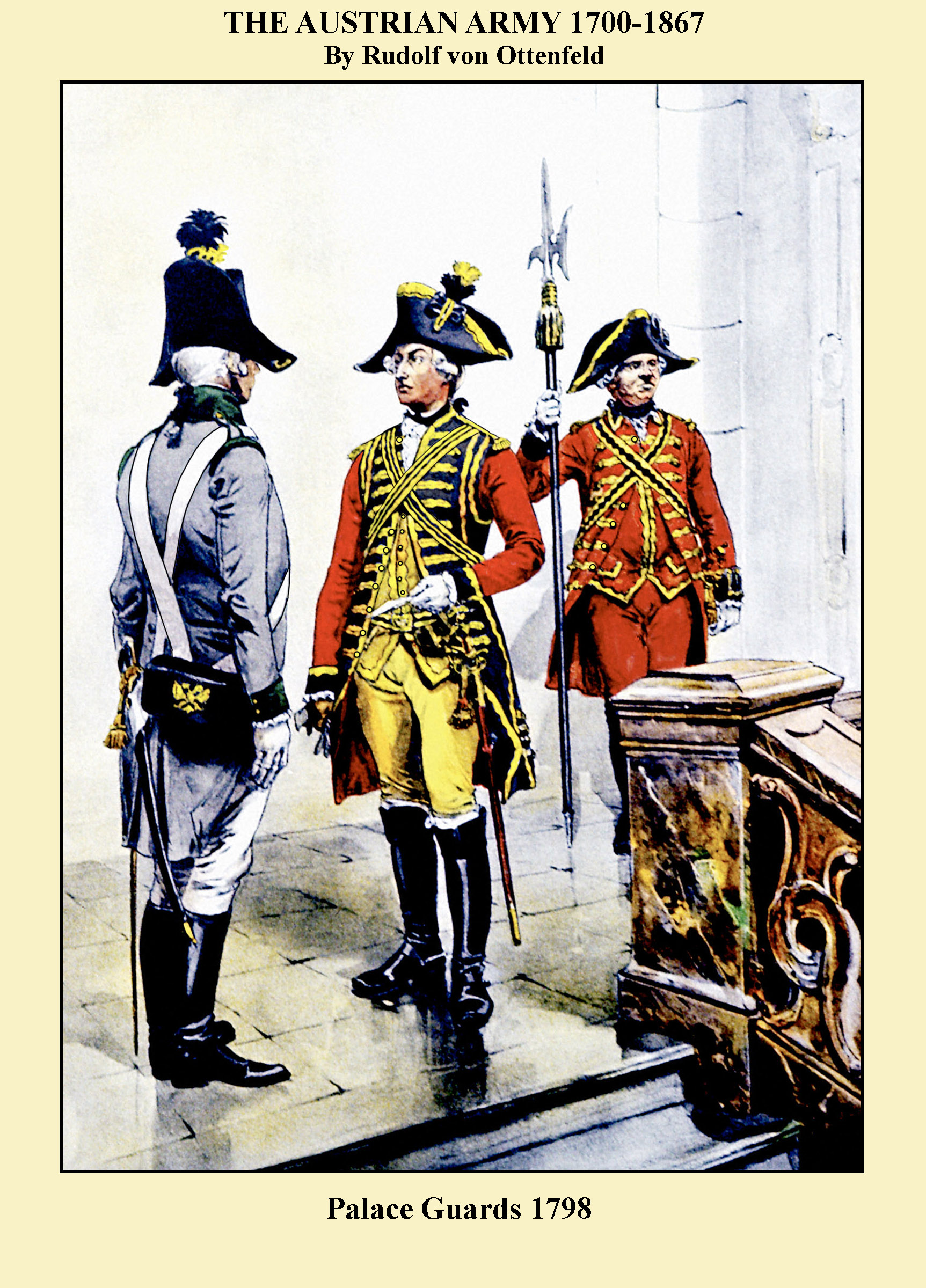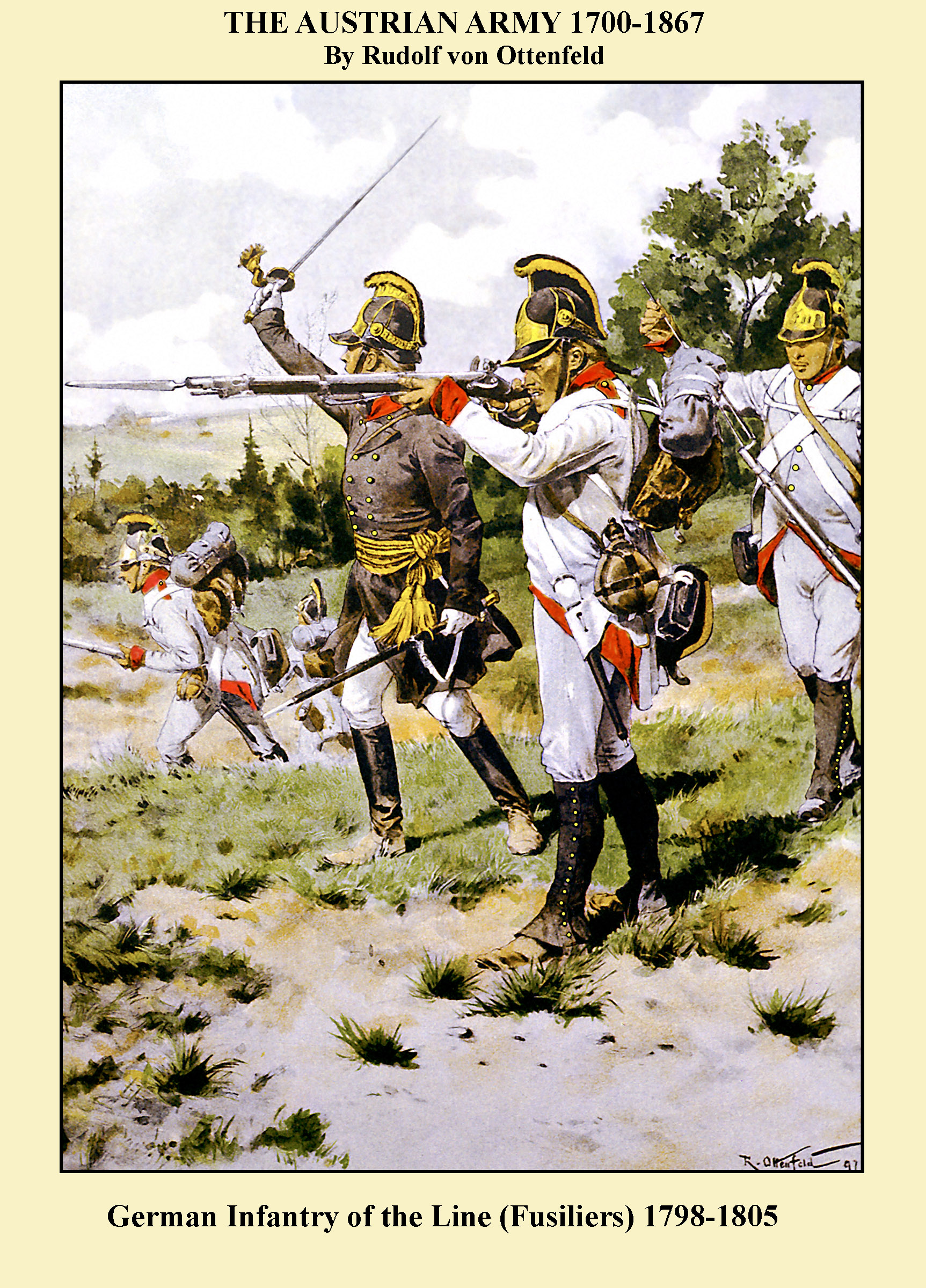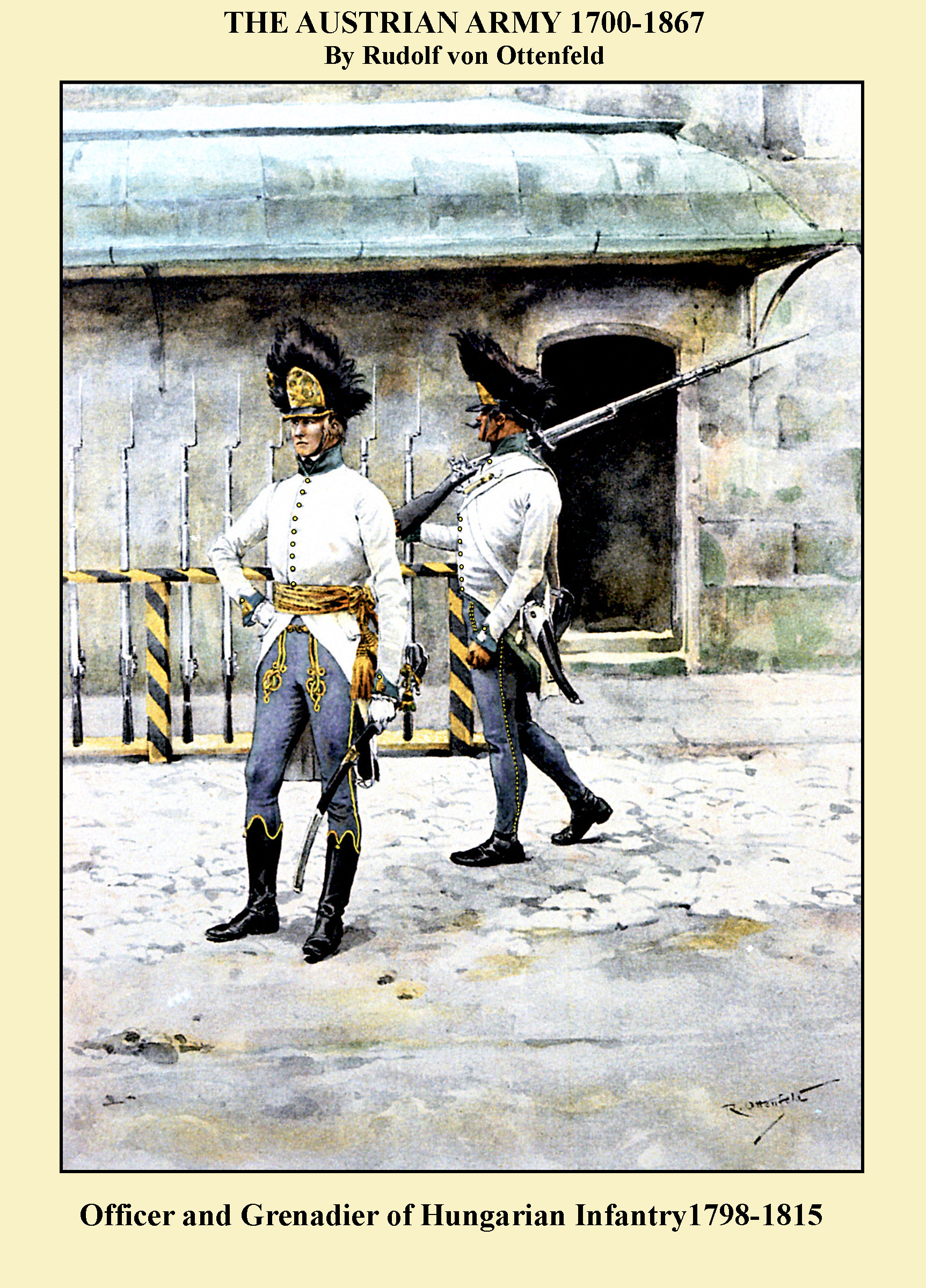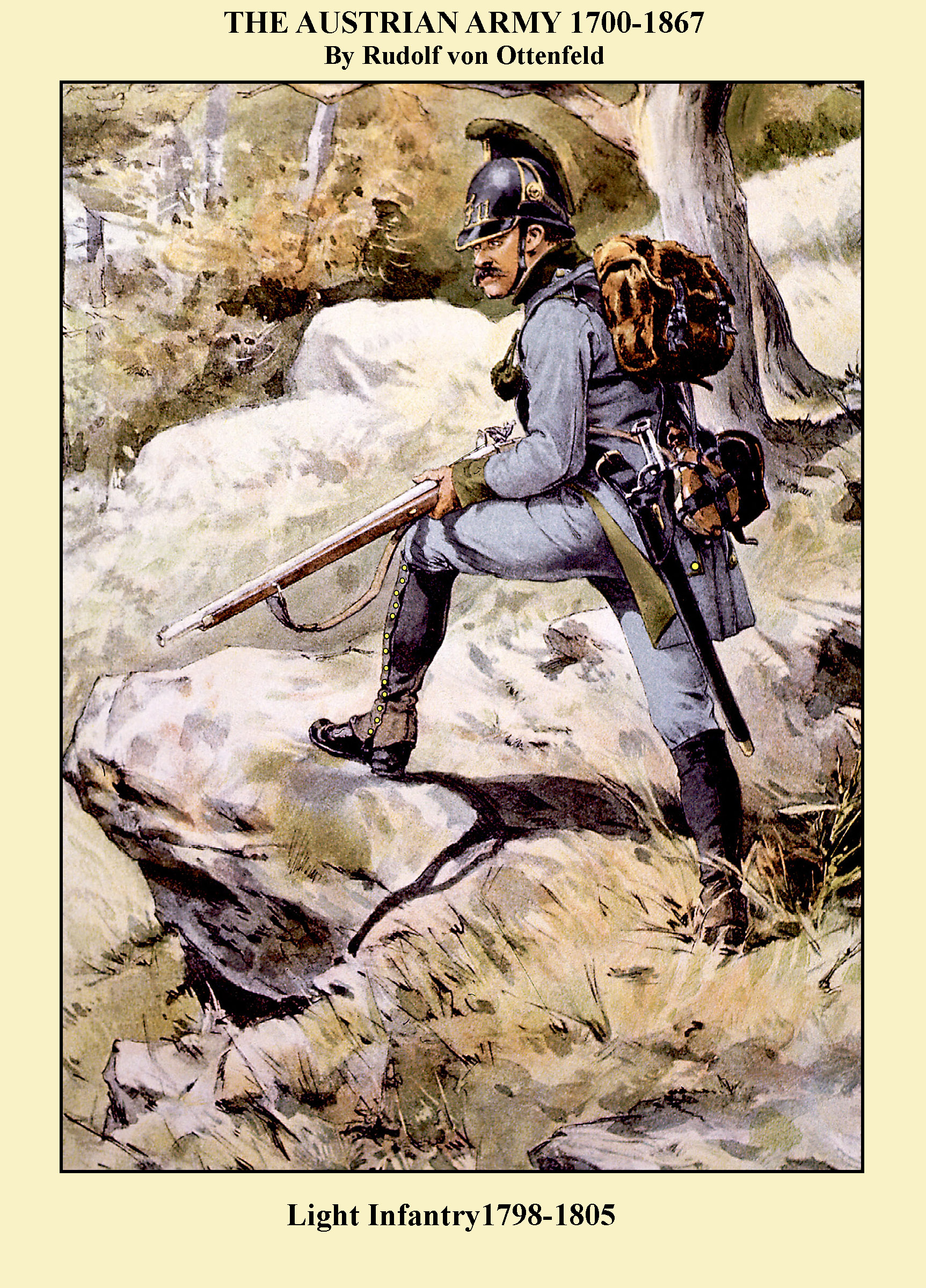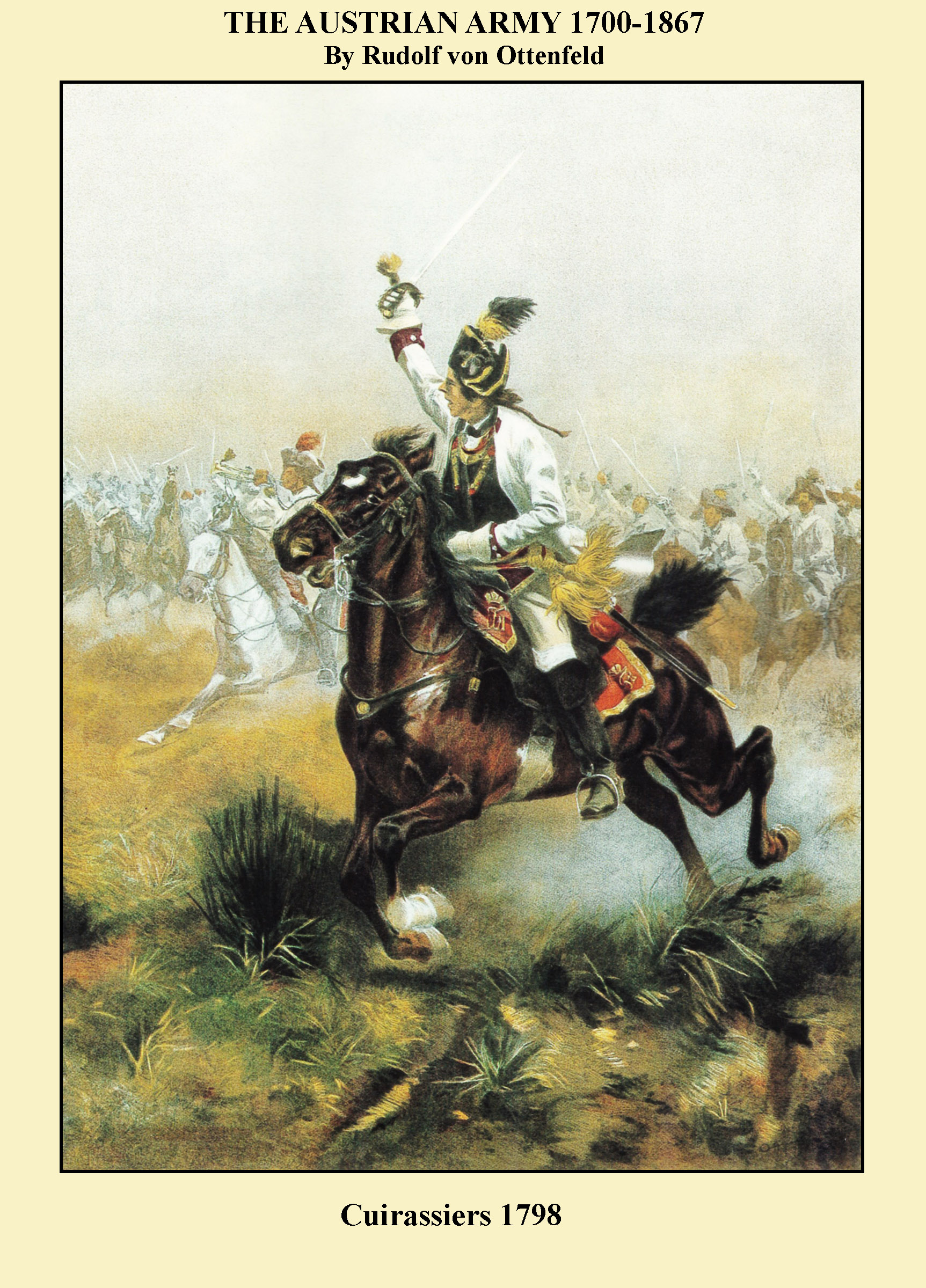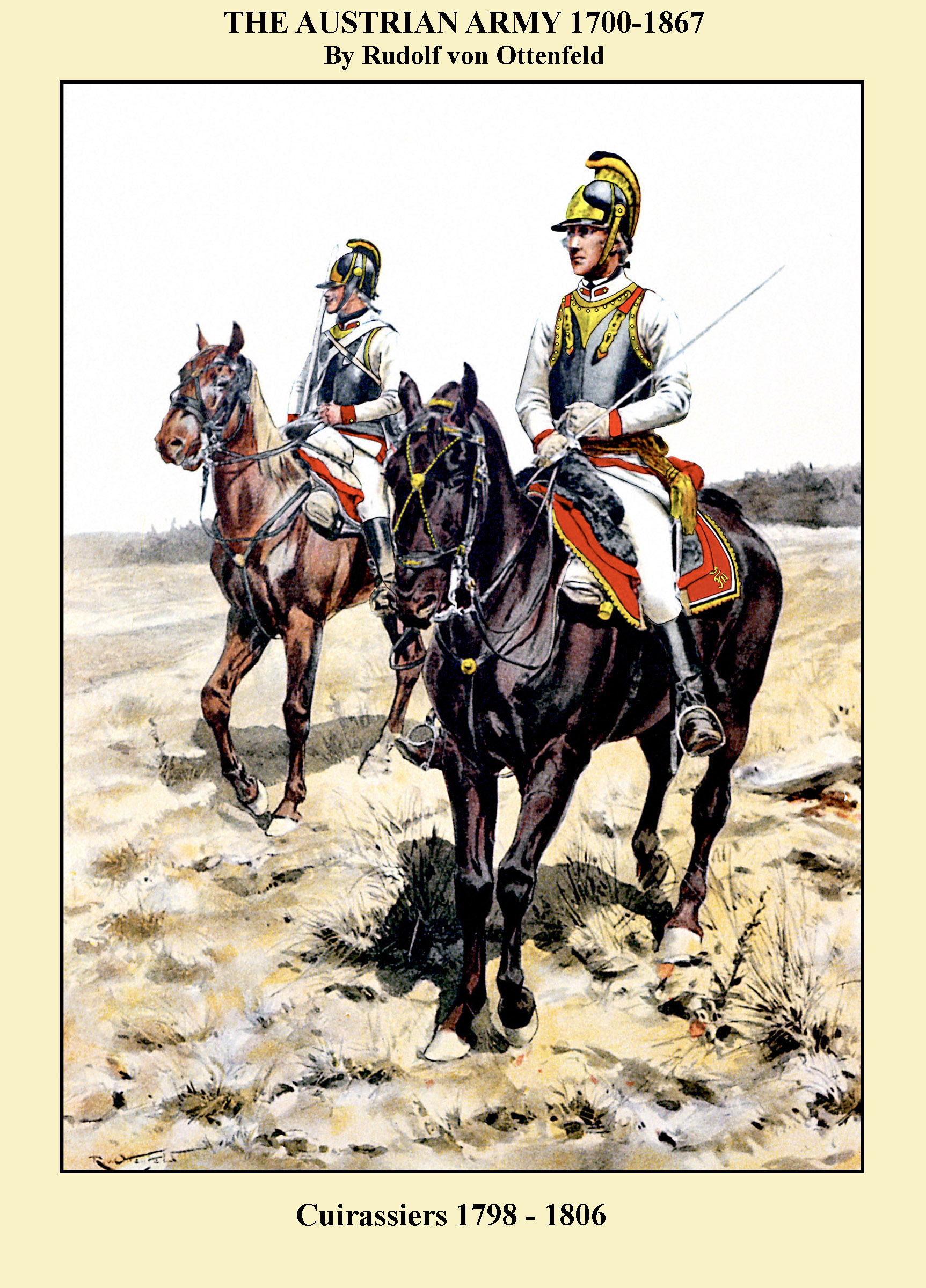THE WORLD OF MILITARY UNIFORMS
1660-1914
THE AUSTRIAN ARMY 1700-1867
By Rudolf Otto von Ottenfeld
Page 3
PART II
THE AUSTRIAN ARMY OF THE
FRENCH REVOLUTION AND NAPOLEONIC WARS
From the book by Bruce Bassett-Powell and Philip Cranz published by Uniformology in 2011
Hostility to the ideals of the French Revolution caused Austria to ally itself with Prussia to confront it. France, however moved first and in 1792 declared war on Austria in what became known as the First Coalition War. Thus began twenty three years of almost continuous warfare. The First Coalition (1792-1797) began badly for Austria with defeats at Valmy and Jemappes and during the rest of the period fared no better. It ended with the treaty of Campoformio in 1797, with France gaining much territory in the Netherlands and Italy. The Second Coalition War (1798-1802) saw Austria defeated at the decisive battles of Marengo and Hohenlinden (1800). Her allies (Russia, Naples and eventually Britain) also decided to leave the coalition and sign the Treaty of Amiens.
The rise of Napoleon and his ambitions caused the treaty to be broken in less than a year with France pitted against Britain. In 1805 a Third Coalition was formed which included Britain, Austria, Russia and Naples. Napoleon’s swift advance to southern Germany enabled him to isolate Karl Mack’s Army at Ulm. He took Vienna in November and again defeated the Austro-Russian armies in what was considered his greatest battle … Austerlitz. The war ended with the Treaty of Pressburg and the end of the Holy Roman Empire.
The Fourth Coalition was brief (1806-1807) and included Prussia, Russia and Britain, but ended with Prussia’s disastrous defeat at Jena-Auerstadt in October 1806 and the defeats of Russia at Eylau and Friedland in April 1807. The Treaty of Tilsit (1807) rendered Russia and Prussia unable to participate in the next coalition.
Napoleon’s major defeats of his armies in Spain by the Britain and Spanish/Portugese allies gave impetus to Austria to begin the Fifth Coalition War of 1809. Again, Austria miscalculated. Despite a marginal victory at Aspern-Essling that year they were again defeated at Wagram. The Treaty of Vienna in October 1809 deprived Austria of a large amount of territory.
It could be said that, as Britain was almost alone against the French and regularly defeating them in Spain, they continued the 5th Coalition, but in 1812, the Russians abrogated the Treaty of Tilsit prompting Napoleon to invade. The Sixth Coalition War was the most brutal for the French. After Borodino which was, at best, a stalemate, the French occupied Moscow but were forced to retreat upon the onset of winter. The rest of the story is well known. Austria, nominally an ally of Napoleon moved its army back to the homeland, along with the Prussians. The ensuing battles (often brilliantly handled by Napoleon) culminated with the Battle of Leipzig in 1813 which forced the French to retreat to France. The war ended with the occupation of Paris and the abdication of the Emperor.
The Seventh Coalition War can be described with one word. Waterloo. Although Austria took no part in the battle, it was on the march south, should it be needed.
It is a grand irony that Austria, defeated in most of the battles it fought with France in the previous 23 years should end the war as one of the main arbiters of the future of Europe. The Congress of Vienna, dominated by the brilliant Austrian diplomat, Prince Metternich, redrew the map of Europe. Austria gained a great deal of territory including northern Italy and was the main influencer of Southern Germany. The Austrian Army remained an organization of contrasts. A multi-national, multi-ethnic force dispassionately led by a class of patricians with tenuous control of most of its entities. It would be tested again in 1848.
AUSTRIAN ARMY UNIFORMS
The Austrian army fought the greater part of the French Revolutionary Wars in the uniforms of the 1760s. In 1798 these outdated uniforms were modernized. The most striking feature was the replacement of the Casquet with the black leather crested helmet issued to most elements of the army except Hussars and Uhlans (Lancers). For many units this headwear was worn for most of the Napoleonic Wars although shakos were introduced in 1806. The basic uniforms retained the same style with the white jacket dominant in the infantry and heavy cavalry. Hungarian troops still wore the tight light blue trousers. The introduction of light infantry or Jaegers prompted the use of grey as the basic colour while the artillery continued with the brown jackets and other support troops were various shades of grey. As the shako grew in popularity, many other support troops and auxiliaries preferred the Round Hat with brim turned up on one side. Despite the wearing of trousers over gaiters by most European infantry before 1815, the Austrian infantry never did so. In fact, they only adopted long trousers well into the 1830s.
German Fusiliers 1798 - 1805
Here are German Fusiliers of the Austrian Army as they would have appeared during the battles in Italy and at the battle of Marengo. They are wearing the helmet with brass trim and a black over yellow fur crest. The pack is now worn higher and slung in the typical Napoleonic fashion with the grey greatcoat rolled on top. Facing color shoulder straps are now worn. Note the brass chin scales tied behind the helmet it is fastened under the chin with a black leather strap for comfort. The officer at left wears a grey frock coat over which is tied his gold sash worked with black threads.
Officer and Grenadier of Hungarian Grenadiers
The bearskin grenadier caps of the Austrian army were worn till the eighteen-forties. They carry a large brass plate with the Austrian eagle and brass edged leather peak. Hungarian troops were distinguished by their tight light blue trousers and the “Bear Claw” woollen devices on the pointed cuffs. Grenadiers were armed with the short sabre and also carry the brass match case attached to the cartridge box belt. The officer's frock coat is plainly cut without turnbacks or shoulder straps. Note the decorative knots on his trouser thighs.
A LIST OF INFANTRY REGIMENTS WITH TITLES, FACING COLOURS AND BUTTON COLOURS APPEARS AT THE END OF THIS SECTION
Light Infantry 1796-1806
At the battle of Lodi in 1797 and the battle of Marengo in 1800 the Austrian Army had two battalions of Jaegers or light infantry. This plate depicts one of those light infantrymen. The basic uniform was in the famous Pike Gray or steel gray color that would define the Austrian Jaegers for over 100 years. Many of these light troops were formed from Frei corps or volunteer corps. Recruited from hunters and woodsmen who had some skill and knowledge of using cover and marksmanship. The uniform was steel gray (a light blue gray) with bright green facings. During the 1800 period the headgear was the Austrian style helmet in black leather with brass fittings and a green crest. The weapon was the Jaeger pattern musket or the short rifle with long bayonet. The equipment was black leather.
Cuirassiers 1798
The 12 regiments of cuirassiers wore their old 1770 uniforms right up to the turn of the century. The only difference was that the tricorne hat had developed into a bicorne worn athwart.
Cuirassiers 1800-1809
The leather helmet was taken into wear in early 1800. They wore single breasted white coats with cuffs and turnbacks in facing colours while the high collars were white. Unlike other cuirassiers of the period and the French cuirassiers who would be formed some years later they wore only a breast plate with the fastening straps across the back covered with yellow metal plates. The breastplates were painted black and ornamented with gild fittings for officers. All troops were armed with the heavy straight sword. Saddlecloths were red trimmed with yellow or gold for officers.
Dragoons, Light Horse and Mounted Rifles 1800
There were fifteen regiments of Dragoons in 1798 who were dressed similarly to Cuirassiers but with Green coats instead of white (and no Cuirasses). They exchanged their infantry casquets for helmets at the same time as the Cuirassiers did their bicornes. After 1801, the dragoons were split into two branches, dragoons and Chevauxlegers (Light Horse or Light Dragoons). It was intended that the Light Horse regiments would retain the green while the Dragoons reverted to white. In practice this never quite happened and some of the Chevauxleger regiments adopted white and to an observer there was much confusion. By 1815 the dragoon regiments numbered 1 to 6 wore white while the Chevauxleger regiments Nos 1, 2, 4 and 7 wore green and regiments 3, 5 and 6 wore white.
The mounted rifle regiment appears to have been short lived wearing the Jaeger grey until 1801. A Stabs Dragoner regiment was raised in 1805 also wearing grey.
Hussars 1798-1806
This is a hussar of the 2nd Erherzog Josef Regiment as denoted by his light blue dolman and pelisse, red shako, and brass buttons. The black over yellow plume was seldom worn on campaign. This trooper has a white sheepskin covering his saddle though most sources indicate these were dyed black.
Typical of all hussars the dolman and pelisse are ornamented with colored cords between the buttons and similar piping around the collar cuffs and around the bottom of the jacket. In most countries the cording was similar to that of the button color, Yellow cords for brass buttons and white cords for white metal buttons in the Austrian army all had this cording of mixed yellow and black. For officers however the cording matched the button color. Gold for brass or gild buttons and silver for white metal or silver buttons.
There were 12 hussar regiments during this period:
Lancers 1798 - 1803
This lancer or uhlan is from the 1st Regiment Merveldt judging by his yellow czpska. The cap is shorter than it was in later years. All the uhlan regiments were uniformed in dark green with red facings and had red cloth saddles during this period. Some sources show a white sheepskin seat while others indicate that they were dyed black. The Uhlans in the Austrian army were recruited in the provinces of Polish Galicia and their skill impressed Napoleon enough to add lancer regiments to his forces. He was so impressed by the skill of their use of the lance against his elite carabiners that he ordered them to be outfitted with cuirasses when they were re-uniformed in 1810. There were only four regiments of lancers in the Austrian army. It is interesting to note that according to more than one source that in each squadron of lancers eight men were armed with the smoothbore carbine and eight with rifled carbines.
Artillery 1898-1803
The Austrian artillery, the most skillful and reliable troops in the Austrian Army, were traditionally uniformed in brown jackets until the end of the Empire. This plate illustrates an officer, gunner and Military Train soldier. The officer wears the 1798 helmet with black and yellow silk crest. The gunner has a simpler helmet with red crest. The train driver wears the pre 1798 round hat and grey jacket with yellow facings. The guns of the Austrian artillery were traditionally painted a light yellow ochre color with black painted metal work. The caissons and ammunition wagons were also painted yellow.
Sappers and Miners 1800
The Austrian Army did not lack specialist troops. In the Austrian army there were separate corps of Pioneers, sappers, and miners. This illustration shows officers and soldiers of Sappers and Miner battalions. The sappers were responsible for laying out camps and build field works while the miners were selected from men with mining experience for building earthworks and fortifications. The officers were some of the most skilled professionals in the army. The uniforms were of steel gray (Pike gray) with red facings. The major difference between the miners and the sappers during the period depicted was in the headgear and plumes. The miner’s hats were turned up only in the back with a black over yellow short plume leaving the front brim down like a visor. The sappers wore the bicorn.
Pioneers and Pontonniers
Pioneers and Pontonniers were separate corps to the Sappers and Miners. The former cleared roads and made pathways down to riverbanks for bridges. The Pontonniers built pontoon bridges to allow the army to advance (or retreat) across rivers. The grey uniforms of the Pioneers had green facings while the Pontonniers had red facings. The round hats worn in 1800 remained somewhat the same for many years changing only in details.
General Officer and Staff.
The Austrian General Officer wore the white coat and scarlet breeches (or trousers) until the end of Empire. At this time the bicorn hat was worn with green plume and his coat was decorated with gold lace. The two Staff officers wear green coats. The officer with red facings is an Adjutant and the officer with black facings and white lace is a Quartermaster.
Rural Militia and Vienna Volunteers 1798
Many years of fighting revolutionary France had spawned a variety of militia and volunteer corps. The rural militia companies were subject to conscription but the volunteers especially from Vienna were loyal and devoted troops. They were first raised to fight the advancing Napoleonic army in Italy and fought valiantly at Rivoli. Many were captured and the unit nearly dissolved. In 1797 nearly 2,000 volunteers were raised but saw no action. The uniform was green with black facings.
Freikorps 1798 - 1806
There were dozens of Freikorps formed during this period. Some with famous names like Wurmser and most with names that are lost in history. The Serbian Freikorps wore traditional uniforms similar to the Grenzer (Frontier) infantry while the O’Donnel and Mahoney Volunteers wore more colourful garb.
Palace Guards
These troops were part of the Imperial Household and had no active service responsibilities. They were responsible for the safety and security of the Emperor and his household. They also performed a myriad of ceremonial duties. The officer of the watch at the center wears the uniform worn in the palace, as does the halberdier at far right. At left is a soldier of the guard in ordinary dress. The gold-laced uniforms were far too expensive for daily wear or drill. The practical grey uniform was worn when not on palace duty.


